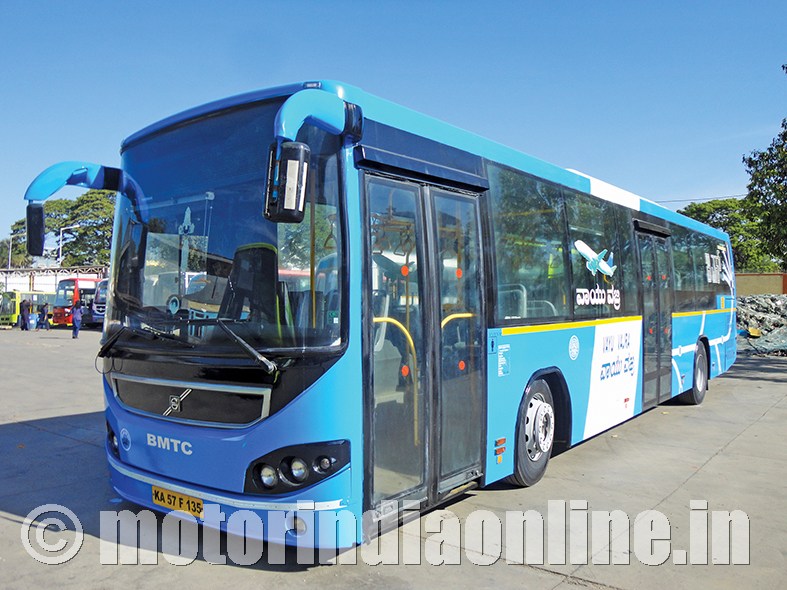BMTC has always been a forerunner in public bus transportation in the India, setting new benchmarks among all other STUs, may it be debut of premium Volvo low-floor buses into urban commute or in offering a variety of bus travel options to commuters. The testimony of its success lies in wide array of customer base in the ‘technology city’, catering to all classes of people in the city. The corporation is also quite active in strengthen information systems and improve processes through introduction of intelligent technology solution, make capacity enhancement through infrastructure development, user-friendly interchange facilities, and fleet upgradation and augmentation.
In an exclusive interview to MOTORINDIA, BMTC’s Managing Director Mr. V. Ponnuraj, IAS, opens up on his institution’s vision on upgrading bus transportation to the all possible heights of sustainable mobility. Excerpts from the interaction:
Why Sustainable Mobility?
Indian cities traditionally had a high share of walking, cycling, and public transportation. In cities with limited formal public transport, localized solutions like shared-auto-rickshaws, tempos etc. have filled in as an ‘Intermediate Public Transport’ system. However, these systems aren’t scaling up to meet the increasing demands. As a result, users are switching to private cars and two-wheelers, leading to the congestion and air pollution in cities.
We should envision a future where we reverse the current trends and urban mobility is primarily driven by public transport, walking and cycling. This will require two important aspects. First, a public transport oriented urban planning, traffic circulation and street network design. Second, restricting the current growth of private vehicles and smaller commercial vehicles.
Centrality of Buses
A bus-based mass transportation system will be central to developing such a sustainable mobility system in India. Considering the mixed land-use and high dense development pattern of Indian cities, only a bus-based solution can deliver medium to high capacity mass-transit solution with limited investment.
Further, bus systems offer a flexible service, wherein cities can plan for exclusive bus lanes on high demand corridors and regular bus services on the remaining network. So, unlike a railbased system, passengers can experience end to end service without having to transfer multiple times. The bus stops are next to streets, thereby making it easy for users to access.
In summary, even if technology changes in the future, the basic geometry of city design and travel characteristics will not change-which can be observed even in the developed countries. Therefore, buses will have to play a key role in shaping the future transport systems in India.
Recent Trends
Lately, initiatives with respect to electrification of fleets, increasing digitalization and data analytics, improving passenger information systems and ticketing systems, and improving street infrastructure and connectivity to buses are re-shaping the bus transportation in India. Further, start-ups solving the first and last-mile problems can go a long way in improving bus user experience.
Improving Performance of STUs
Performance of bus systems can broadly be classified into two categories i.e. increasing ridership and revenue and reducing cost of service provision. BMTC has taken multiple steps towards improving the performance in both the regards, by offering new services of employee transportation for key tech-parks and corporates and school transportation. ‘Intelligent Transport Systems’ is being implemented in BMTC to improve overall efficiency and service delivery, while introduction of electric buses and digital ticketing are other efforts in this regard.
To reduce cost of operations, improving vehicle maintenance systems and enhancing reliability, flexibility and demand responsiveness of bus services is necessary. Our data-based approach to management can help in this regard. We are also working to provide end-to-end mobility for a variety of commuter classes.
ITS off to a great start
ITS system delivering ‘connected vehicle technologies’ can help in real-time control strategies to monitor vehicles and operations, in reallocating some fleets from the current fixed network-based operations to a more dynamic routing and scheduling system, in improving customer experience, and in application of ERP based solutions.
However, these technologies help improve the efficiency of an already existing system, but will not change the vehicle capacity or user needs. Indian cities suffer from a significant under-supply of public transport services. Therefore, cities should prioritize investments towards increasing the overall supply of bus services while being open to the disruptions caused by new technologies.
Further, the USP of a bus system is the reliable, fixed route and fixed schedule services to the users. Therefore, the impact of ‘connected vehicle’ technologies is likely to be less dramatic compared to a taxi based shared mobility system where the routes and areas of operation vary dynamically.
